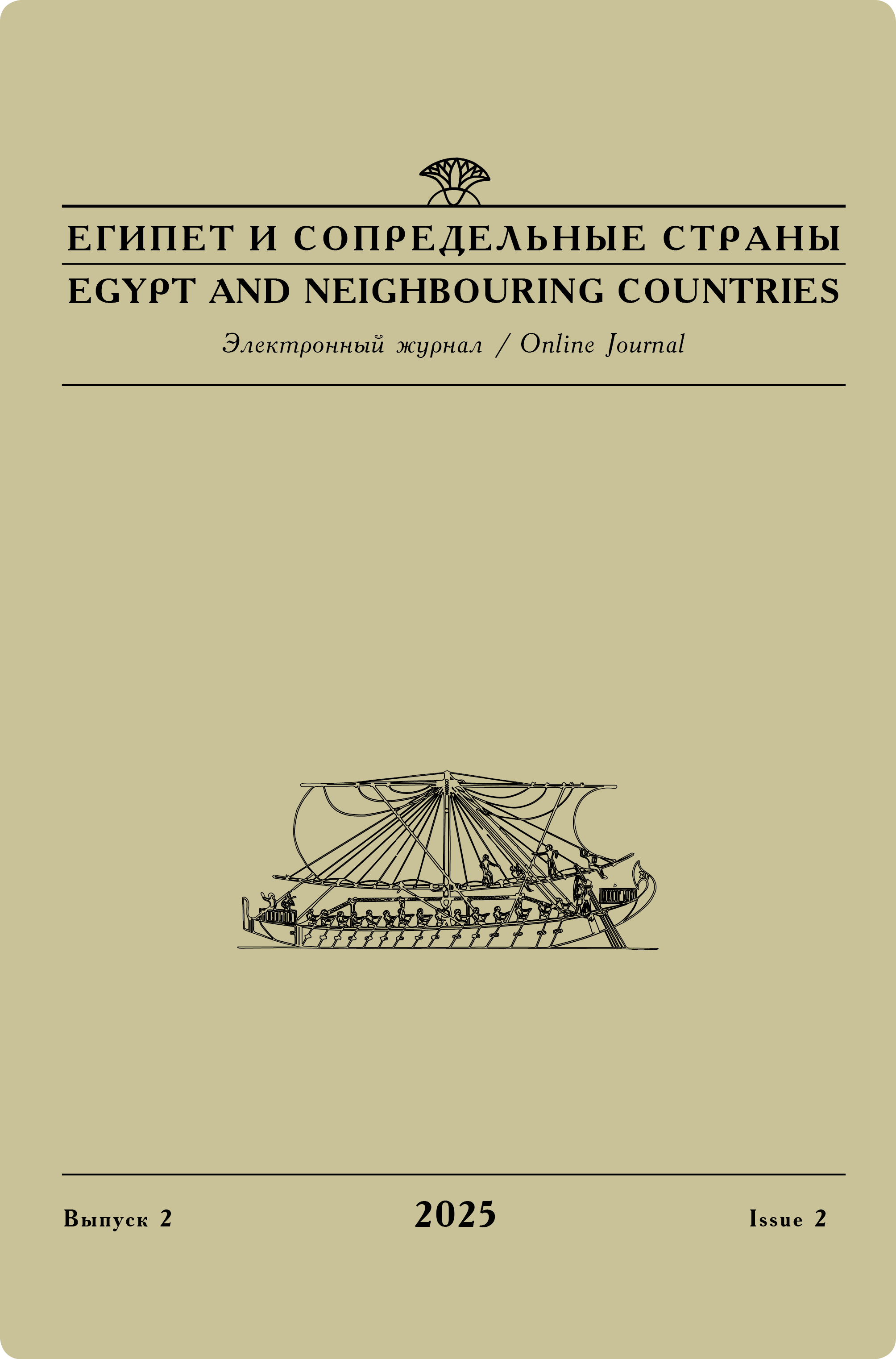Issue 4, 2016
Galina A. Belova
Egyptian administration in times of Amenhetep III — Tutankhamun: to the issue of its structure
During the reign of Amenhetep III Egypt became a powerful state dictating its policy to neighboring lands and nations. The pharaoh succeeded in creating a well-functioning administrative machine in the capital city. The desire to imitate the king gave rise to a certain lifestyle, and a number of high-ranking officials bore the name Amenhetep after their ruler. Of course, in pharaoh’s inner circle were a lot of officials with this name.
One of these high-ranking officials was Amenhetep called Ḥuy, whose tomb is located in Saqqara. G. Bagnani first paid attention to importance of the surviving pieces of information left by the official on the monuments. W. Hayes managed to trace the fate of many monuments. W. Helck collected and published the most part of inscriptions retaining the name Amenhetep. The monuments belonging to Amenhetep and his family were also studied by E. S. Bogoslovskiy and N. B. Landa,
who managed to enlarge the existing collection.
However, scarcity of the surviving information in inscriptions mentioning the name Amenhetep and dated to the reign of Amenhetep III and Amenhetep IV, as well as the fact that researchers do not distinguish the names of different self-governing parts of the ancient Egyptian capital, which were parts of officials’ titles, resulted in total equation of all officials bearing the name Amenhetep. The author, having carefully analyzed the information in the inscriptions ascribed to the official Amenhetep-Ḥuy, draws a conclusion that a number of monuments listed or described by the above mentioned researchers come from the official’s tomb and belong to him. However, some of them have nothing to do with Amenhetep-Ḥuy at all.
Keywords:
Ancient history, Ancient Egyptian history, Ancient Egyptian state, Amenhetep III, Amenhetep IV, Ancient Egyptian administration, titles, Amenhetep.
Original language — Russian.
Read full article




